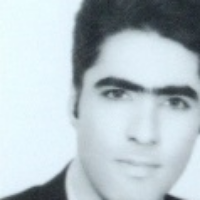Investigation of photodynamic and rhamnolipid inhibition on the dermatophyte biofilm
The lack of success in treating diseases related to dermatophytes is often due to the formation of biofilm, which makes dermatophytes resistant to antifungals. Therefore, it seems that finding therapeutic solutions to inhibit biofilm formation can help in the treatment of dermatophytosis. Based on this, in the present research, an attempt was made to evaluate the inhibition of dermatophyte biofilm production using photodynamic therapy and rhamnolipid biosurfactant. The aim of this research was to investigate the simultaneous effect of photodynamic and rhamnolipid on biofilm inhibition in dermatophytes.
In this study, five dermatophyte species including three isolates of Trichophyton mentagrophytes, Trichophyton rubrum and Trichophyton verrucosum and two isolates of Microsporum canis and Microsporum gypseum were evaluated. Biofilms were treated with rhamnolipid and visible light irradiation, and their effects on reducing light absorption and biofilm formation were measured.
The results showed that the combination of these two methods has a significant effect in inhibiting the growth and formation of biofilm in dermatophytes. Especially, a significant decrease in average light absorption and biofilm formation was observed in Trichophyton species.
These findings indicate the high potential of using combined methods in treating fungal infections and managing biofilms. The current research can be used as a basis for future studies in the field of new treatments for fungal infections.
-
Production of bioplastics by bacilli isolated from the landfill of waste and sewage in Golestan province
Amin Lotfvarzi *, Seyed Taleb Houseini, Ali Bagheri Hashem Abad, HamidReza Pordeli, Farhad Yolmeh, Ania Ahani Azari
Iranian Journal of Biological Sciences, -
Isolation and identification of halophilic and extreme halophilic bacteria from saline water wetland ecosystems and determination of their enzymatic profile in Golestan province
Maryam Mohajertabrizi, Mohsen Firoozrai *, Hamidreza Pordeli
International Journal of Molecular and Clinical Microbiology, Summer and Autumn 2020



